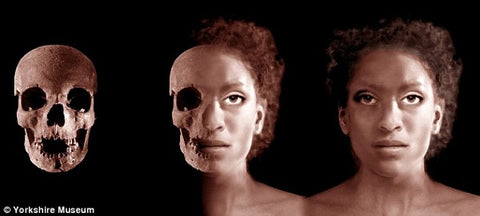
With only one hour to spare, let us see what we can find on the internet!
1. Prince Whipple, the African slave who served in the U.S. army.
"According to most historians, that man in the 1851 painting is Prince Whipple, an African American slave who is widely known for serving in the U.S. Army during the War for Independence. If you have ever come across the Washington Crossing the Delaware, the oil-canvas painting by the German-American artist Emanuel Leutze, you should notice the image of an African American man depicted rowing at Washington’s knee.

Prince Whipple was an African American slave and later freedman. He was a soldier and a bodyguard during the American Revolution under his enslaver General William Whipple of the New Hampshire Militia who granted him his freedom after the war.

Historical accounts state that Prince was born in the mid-1700s in a village in Amabou (Anomabo) in present-day Ghana. He was born free and to wealthy parents who sent him and a cousin, Cuffy, to study in America."
2. The Ivory Bangle Lady
"Around 400 CE, a wealthy lady was buried near the Roman city of Eburacum (modern York) in northern Britain. She was buried with jewelry including an assortment of bangles, some of white ivory from Africa, others of black jet from Britain.

The Ivory Bangle Lady is a skeleton found in Sycamore Terrace, York in 1901. She was a high-status adult female, potentially of North African descent, who died in York in the 4th century AD.

Her name is not recorded, but she has come to be known, because of her jewelry, as the Ivory Bangle lady.

3. Black History Month is celebrated at different times of they year.
"In the United States and Canada, we celebrate Black history in February. However, in the United Kingdom, Ireland, and the Netherlands, they honor it during the month of October. In 2014, Ireland became only the fourth country in the world to celebrate Black History Month."

4. Colored Branch Libraries
"Twelve segregated Carnegie libraries (or “Carnegie Negro libraries”, as they were called then), a group of public libraries that opened between 1900 and 1925 and were an official extension of Andrew Carnegie’s (and later the Carnegie Corporation of New York’s) wellknown library building program.

These libraries opened in Atlanta, GA; Greensboro, NC; Houston, TX; Knoxville, TN; Louisville, KY (2 libraries); Meridian, MS; Mound Bayou, MS; Nashville, TN; New Orleans, LA; and Savannah, GA. Only one segregated Carnegie library opened in a northern community: Evansville, IA.

For as many as six decades these libraries served as learning spaces for African Americans in the pre-Civil Rights American South. By the 1970s, most had closed or were integrated into the formerly white people-only public library systems of their larger communities."
More on the libraries.
5. Jennifer Hosten, The First Black Miss World (Center)

"Jennifer Hosten is a radio announcer, development worker, diplomat, author, model and beauty queen who won the Miss World 1970 contest, representing Grenada. She became the first black woman and the first woman from her country to win the title.

Watched on TV by over 22 million people in Britain, and 100 million worldwide, the incident was seen as a galvanising moment for the women’s liberation movement."
Here's a great article by The Guardian.
Learn anything new?

I always learn something new from your blog, and I always have a list of things to look up later.😉
Leave a comment